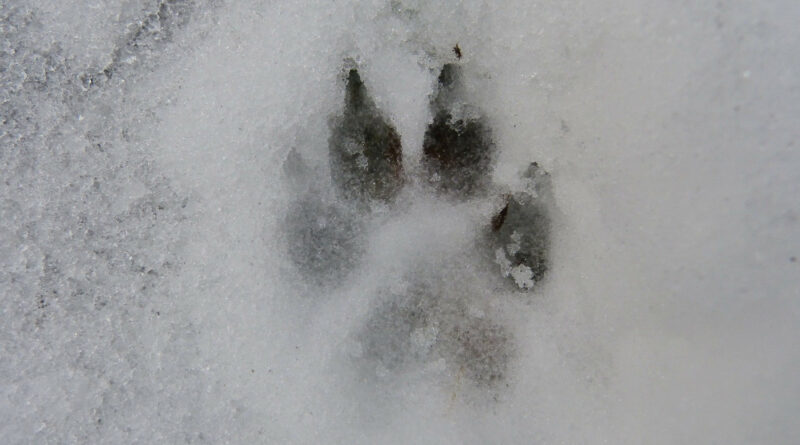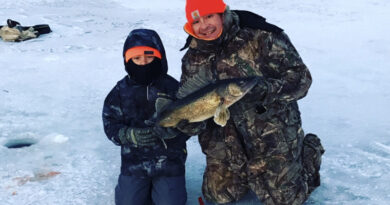Tracking & Trailing
As I am fond of telling my students, every trail has a story to tell and if you are patient enough you can learn to read the writing each footprint makes in the soft snow of winter. Go to a nearby forest, field or natural area. When you find tracks, follow them. Ask your children which direction the animal was heading (look for scuff marks, usually located at the rear of the tracks). Was it running, walking, lying down? Look for signs of browsing (rabbits have sharp teeth and nip small saplings at a 45-degree angle, deer do not have any top teeth and they tend to tear and chomp overhanging branches and saplings (especially cedar). Red squirrels love to husk cones, pulling of the scales in large piles. Was the animal walking in a straight line (fox, coyote, house cat)? Was it hopping (squirrels, rabbits, mice), or did you notice one larger foot landing beside one smaller foot (raccoon, porcupine)?
The more children follow tracks, the sharper their eyes become. If you are lucky, you can follow tracks right to their source (perhaps a squirrel up in a tree). To practice tracking skills further, use this activity when there is no snow. Take solid round log a foot or so in diameter, approximately two feet long and drive in a series of wood screws (thirty or so) so the heads are sticking out all around the log. Attach a stout rope and drag the log in a winding fashion through a wooded area. If you can, hide a small stuffed animal at the end. The screws catch on the undergrowth, turning over leaves, moving branches and of course, the path of the log leaves a distinctive trail. The screws mimic the movement of claws and feet through the underbrush. Have your children attempt to follow the trail until they find the hidden stuffed animal. As your kids become more keen and adept, begin to remove some or all of the screws. This makes the challenge of following the log trail that much more difficult. You are teaching your children the fine art of trailing! Use this technique as a way of discovering signs of an animal’s passage. Overturned leaves, bent grasses, scraped moss, disturbed earth, scat (animal droppings) and browse marks are all sure signs of an animal passing through.
For added adventure, try a tracking stick. Use a ¾ inch dowel about two feet long and attach two hair elastics, one for either end. If you find tracks in the soft mud or snow, slide the hair bands on the tracking stick so you can measure the stride of the animal (the distance between the paw prints from the heel of one to the heel of the next paw print ahead). Once the tracks leave the mud or snow, flip the tracking stick over and this will tell you where the next paw print should be. Look for subtle disturbances (bent grass, scratches etc.). Follow the trail as far as you can. Who knows what amazing stories are written in the soft snow and woods, just waiting for someone like you to follow, read and appreciate them?
By: Jacob Rodenburg




